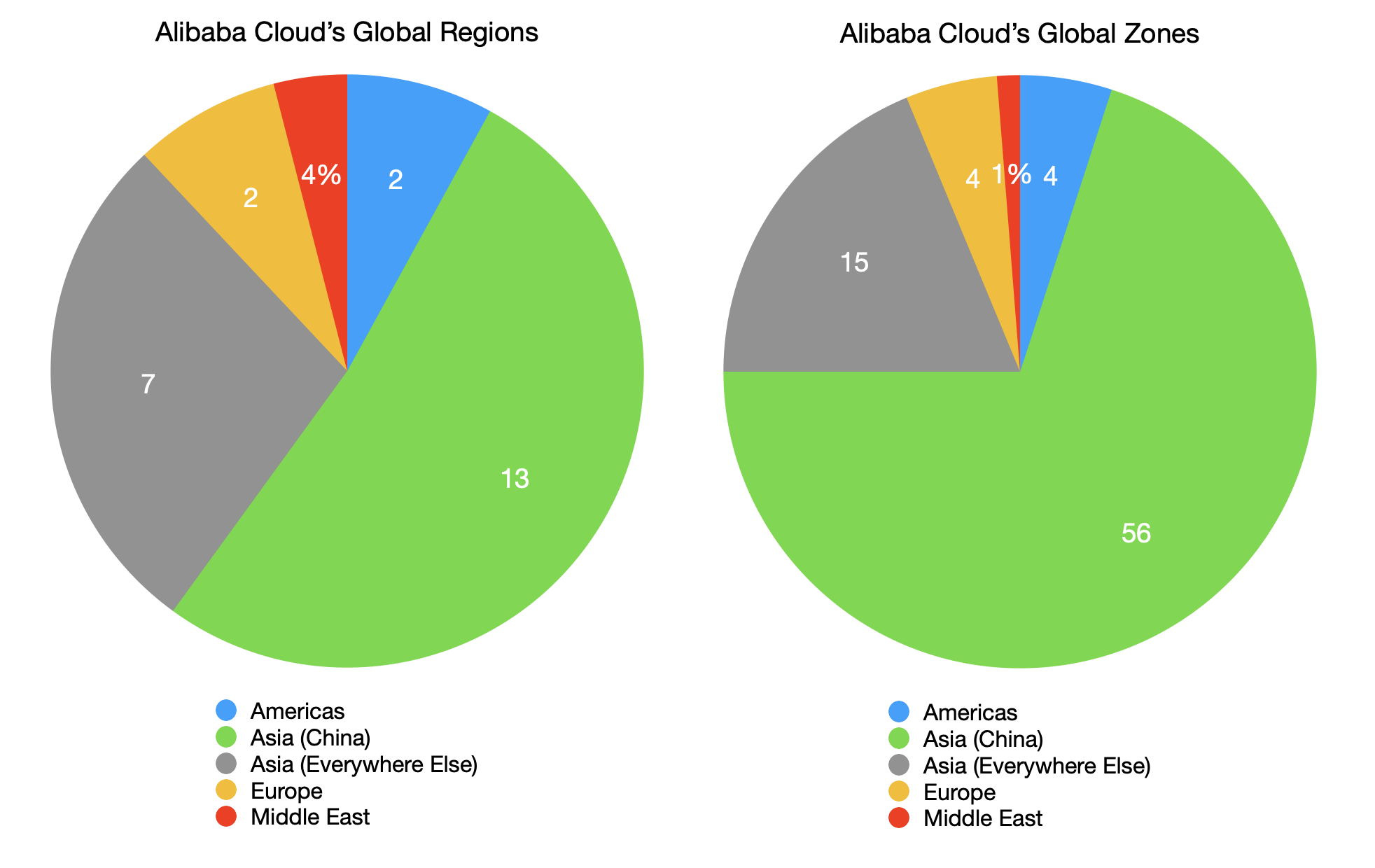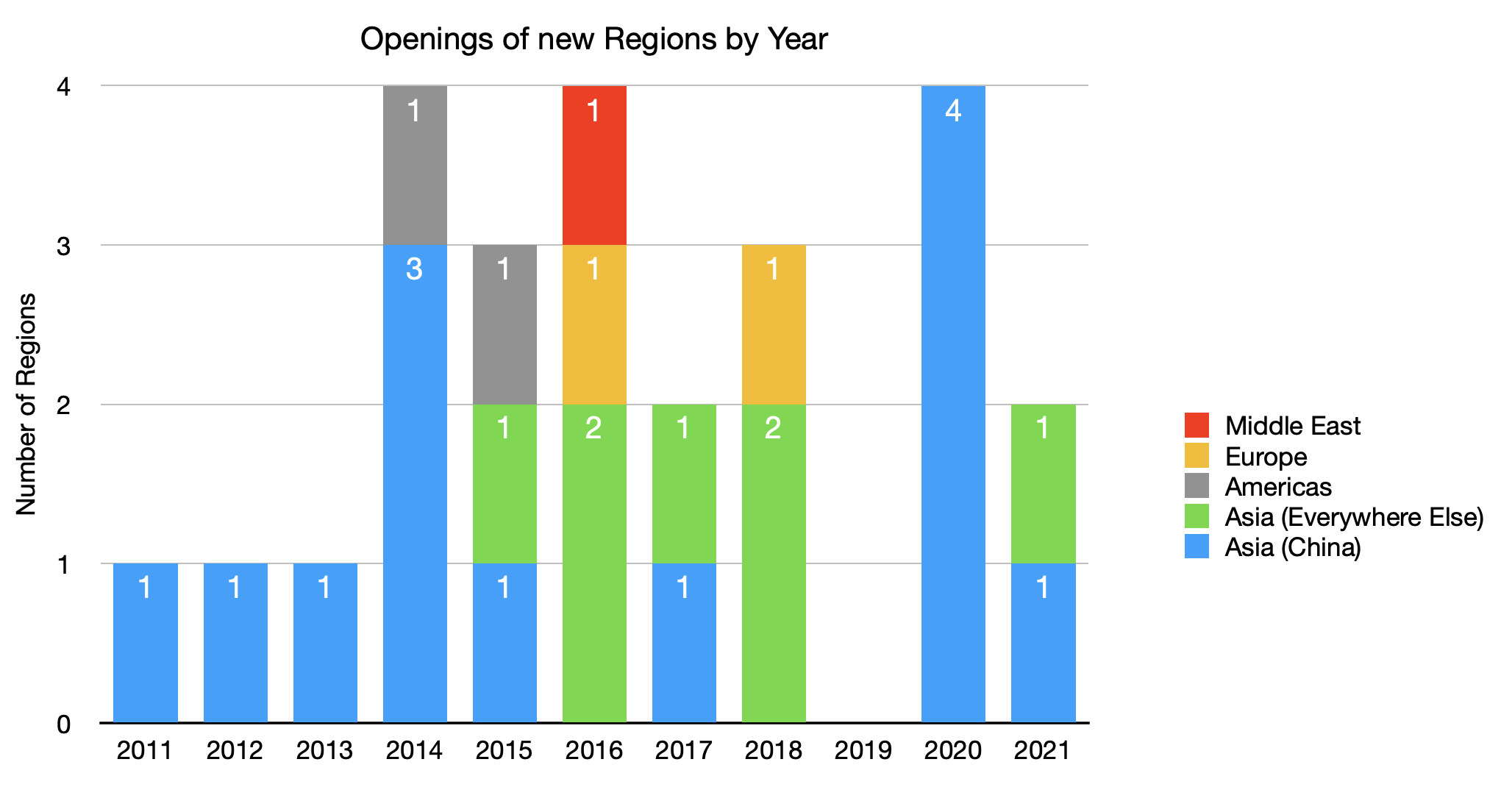By: Jeremy Pedersen
Welcome back for another Friday update! This week we're taking it easy and considering some fresh product updates.
We did a product update blog just a few weeks ago, so this'll be a quick one!
BONUS: You can find a quick analysis of Alibaba Cloud's global expansion at the end of this article!
Alibaba Cloud's Cloud Drive service is now available in regions outside China, speeding things up considerably for non-Chinese users!
Unfortunately, the documentation for this product is still only available in Chinese. Google Translate should help!
Alibaba Cloud's GA (Global Accelerator) Service has added support for multiple SSL/TLS certificates. You can learn more here.
Self-built PostgreSQL databases can be migrated to RDS using the new one-click migration feature. Learn more here.
Three new Zones now support redis, as documented here. The Zones are:
AnalyticDB for MySQL now allows data export to HDFS, as documented here.
Alibaba Cloud's Datalake tool, DLF, is finally live on alibabacloud.com!
Learn more here. Outside China, the service is currently available in Singapore.
If you have been watching Alibaba Cloud for a while, you'll know that it has been expanding and adding new datacenters for more than a decade.
In fact, with the exception of a pause in 2019, at least one new Region has been opened every year since 2011!
Just in case you missed it, Alibaba Cloud is now up to 25 Regions and 80 Zones. Here's the full breakdown:
Outside Mainland China, there are 13 Regions and 27 Zones:
Inside Mainland China, there are 12 Regions and 53 Zones:
It's hard to see what's going on with just a "wall of text", so let's break things down a bit more by graphing things out!
All the data used below comes from this page.
Let's start by looking at Alibaba Cloud's Regions and Zones:

First, a couple of important notes:
A quick glance at the chart shows where Alibaba Cloud's advantage is: China and Broader Asia:
We can learn even more by taking note of the opening dates for Alibaba Cloud's regions:

The key takeaway is continuous expansion: there has only been one year (2019) in which no new Regions went online!
Looking at the chart above, we can break the expansion down into "eras":
It's likely that the focus on Asia will continue in the near term, so be on the lookout for new Regions there.
That's all for this week, see you next time!
Great! Reach out to me at jierui.pjr@alibabacloud.com and I'll do my best to answer in a future Friday Q&A blog.
You can also follow the Alibaba Cloud Academy LinkedIn Page. We'll re-post these blogs there each Friday.
Fiends, Frauds, and Fakes: Better eKYC With ZOLOZ - Friday Blog, Week 49
JDP - February 10, 2022
JDP - December 2, 2021
JDP - October 8, 2021
JDP - November 19, 2021
JDP - September 23, 2021
JDP - August 5, 2021
 Alibaba Cloud Academy
Alibaba Cloud Academy
Alibaba Cloud provides beginners and programmers with online course about cloud computing and big data certification including machine learning, Devops, big data analysis and networking.
Learn More Cloud Migration Solution
Cloud Migration Solution
Secure and easy solutions for moving you workloads to the cloud
Learn More AI Acceleration Solution
AI Acceleration Solution
Accelerate AI-driven business and AI model training and inference with Alibaba Cloud GPU technology
Learn More Backup and Archive Solution
Backup and Archive Solution
Alibaba Cloud provides products and services to help you properly plan and execute data backup, massive data archiving, and storage-level disaster recovery.
Learn MoreMore Posts by JDP